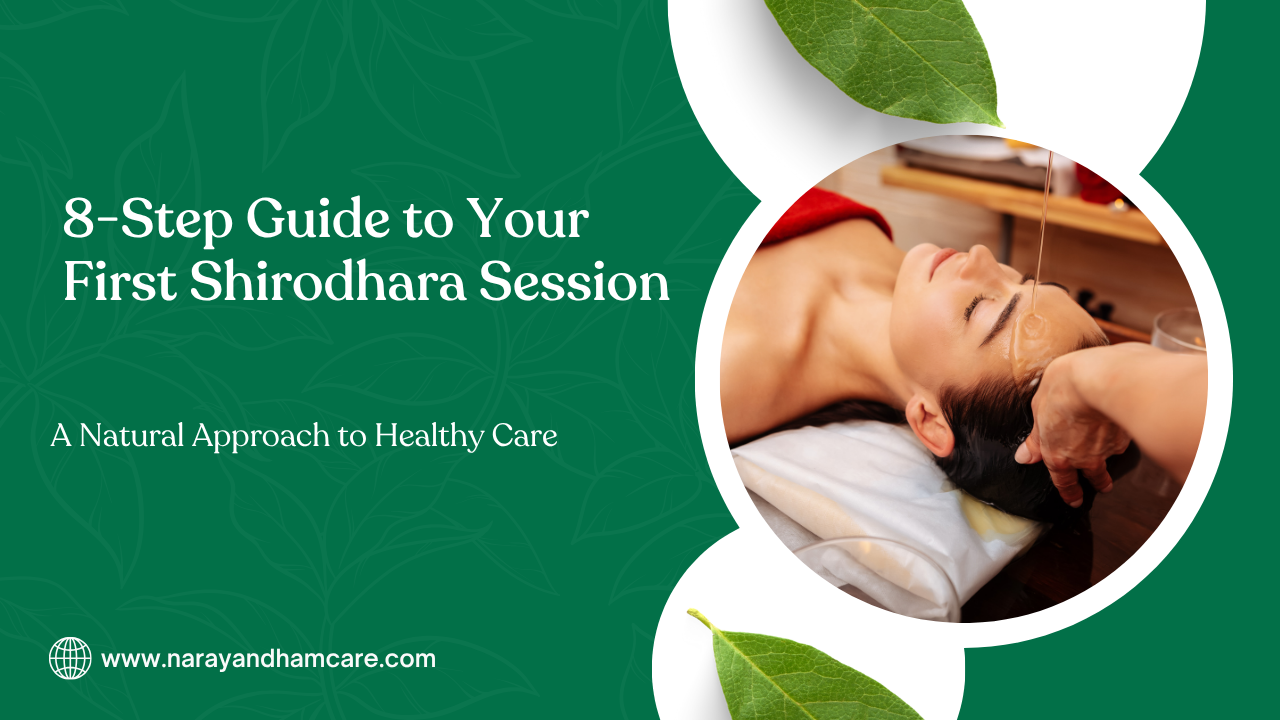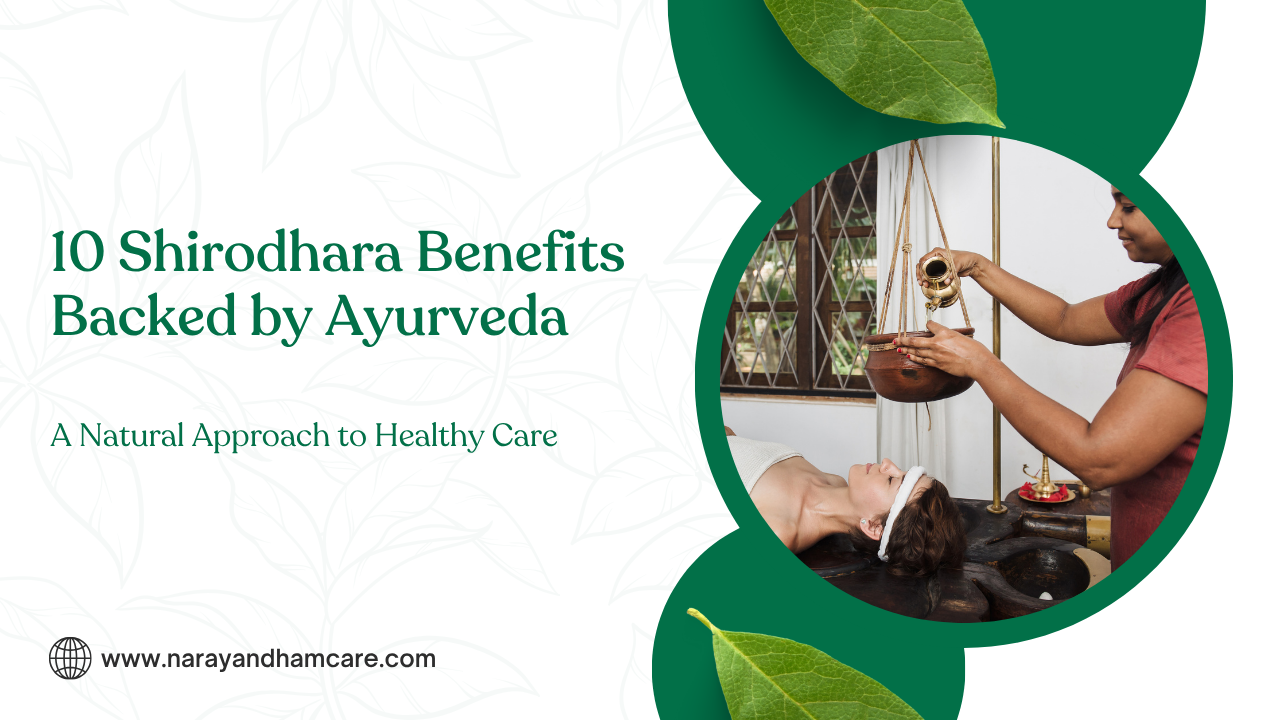🔹 Shirodhara: Introduction
Have you ever felt mentally tired, anxious, or just not yourself lately? In today’s busy life, stress is common—but that doesn’t mean you have to live with it. Ayurveda, India’s ancient healing science, offers a gentle but powerful therapy called that helps relax your mind, improve sleep, and refresh your nervous system.
This blog will walk you through your first session step by step. If you’re nervous or unsure about what to expect, don’t worry. By the end of this guide, you’ll feel ready and excited to try this healing therapy.
🔹 Problem
Stress, anxiety, and poor sleep are big problems today. Many people go through life with constant tension in the body and racing thoughts in the mind. It affects:
- Students during exams
- Working professionals with deadlines
- Parents handling daily responsibilities
- People recovering from emotional trauma
These issues disturb not just your mood, but also your digestion, hormones, sleep, and skin health. Many turn to pills or unhealthy habits, which only give temporary relief.
That’s where Shirodhara therapy comes in—a safe, natural, and deeply calming Ayurvedic solution.
🔹 Symptoms
Here are some signs that your body and mind need something more natural:
- Trouble falling or staying asleep
- Constant overthinking or anxiety
- Irritability or mood swings
- Fatigue even after resting
- Hair fall due to stress
- Tension headaches or neck stiffness
- Dull, tired-looking skin
If these sound familiar, it’s time to explore this peaceful Ayurvedic therapy.
🔹 Solution: 8-Step Guide to Your First Shirodhara Session
Let’s understand what happens during a therapy and how to prepare.
Step 1: Choose the Right Ayurvedic Center
Start by finding a trusted Ayurvedic clinic or naturopathy center. Make sure:
- They use herbal medicated oils or decoctions based on your dosha (Vata, Pitta, or Kapha).
- The therapist is trained in Panchakarma or Ayurvedic therapies.
- The environment is calm, clean, and peaceful.
Ranking keywords used: Ayurvedic clinic, therapy center, trained therapist
Step 2: Dosha Analysis by an Expert
Before the treatment, the Ayurvedic doctor may check your dosha imbalance (your body’s energy type). This helps them choose the right Shirodhara oil:
- Vata: Use warm sesame oil
- Pitta: Use cooling coconut or ghee-based oils
- Kapha: Use stimulating herbal oils
They may ask about your lifestyle, digestion, sleep, stress level, and emotional health.
Ranking keywords used: dosha analysis, Vata Pitta Kapha, oil
Step 3: Preparing Your Body and Mind
You’re asked to change into comfortable therapy clothes. Remove your jewelry, tie up your hair, and silence your phone. The therapist will help you relax, sometimes with a head or neck massage using warm oil.
This is your time to slow down and breathe.
Step 4: Lying on the Shirodhara Table
You’ll lie down on your back on a special wooden Ayurvedic table (called a Droni). A small pillow supports your neck. The therapist adjusts your head position so the oil flows smoothly across your forehead.
Close your eyes and let go.
Ranking keywords used: setup, Ayurvedic massage table
Step 5: Starting the Shirodhara Oil Flow
Here’s the magic part!
A copper or steel pot (called a Dhara Patra) is hung above your forehead. The warm herbal oil is gently poured in a thin stream, moving slowly back and forth between your eyebrows—the area of the third eye chakra.
This rhythmic flow calms the nervous system and balances hormones. You may feel a light trance or deep restfulness.
Step 6: Relax and Let the Therapy Work
The oil flows continuously for 30 to 60 minutes, depending on your condition. You simply lie still and relax. Many people fall into a meditative state or even sleep.
This step:
- Clears mental fog
- Reduces anxiety
- Stimulates the pineal gland
- Balances the mind and body
Ranking keywords used: third eye chakra, pineal gland activation, stress relief therapy
Step 7: Post-Shirodhara Care
After the oil stops, the therapist gently cleans your forehead and scalp. You may be asked to rest for 10–15 minutes. Don’t rush. Allow your body to soak in the benefits.
They may also recommend avoiding:
- Cold water or wind
- Loud noise or screen time
- Heavy food or alcohol
Ranking keywords used: Shirodhara aftercare, Ayurvedic post-therapy routine
Step 8: Repeat Sessions for Long-Term Results
One session gives relief, but a series of 3–7 sessions over days or weeks gives deeper healing. Your therapist will guide you based on your symptoms.
it is often part of a bigger Panchakarma detox or Ayurvedic healing plan.
🔹 Frequently Asked Questions (FAQ)
Q1. Is Shirodhara safe for everyone?
Yes, it is safe for most people. But avoid it during high fever, head cold, pregnancy, or if you have recent head injuries.
Q2. Can I wash my hair after Shirodhara?
Wait at least 2–3 hours before washing. Use mild shampoo. Let the oils nourish your scalp first.
Q3. How often should I do Shirodhara?
For chronic stress or insomnia, 3–7 sessions in a row is best. For general wellness, once a month is enough.
Q4. Which oil is best for Shirodhara?
It depends on your dosha. Common oils include:
- Ksheerabala oil
- Brahmi oil
- Dhanwantharam oil
- Coconut oil (for cooling)
Q5. Does Shirodhara help hair fall?
Yes! Regular improves blood flow to the scalp, reduces cortisol (stress hormone), and nourishes the hair roots.
🔹 Conclusion
it isn’t just a spa treatment—it’s a powerful Ayurvedic practice for mental and emotional healing. If you’re dealing with stress, burnout, insomnia, or even hair fall, this therapy can help you reset naturally.
Now that you know the 8 steps and what to expect, why not book your first session?
Let your mind rest. Let your body heal. Let Ayurveda bring you back to balance.
Have questions or want to share your experience? Comment below or tag us after your first Shirodhara session!





